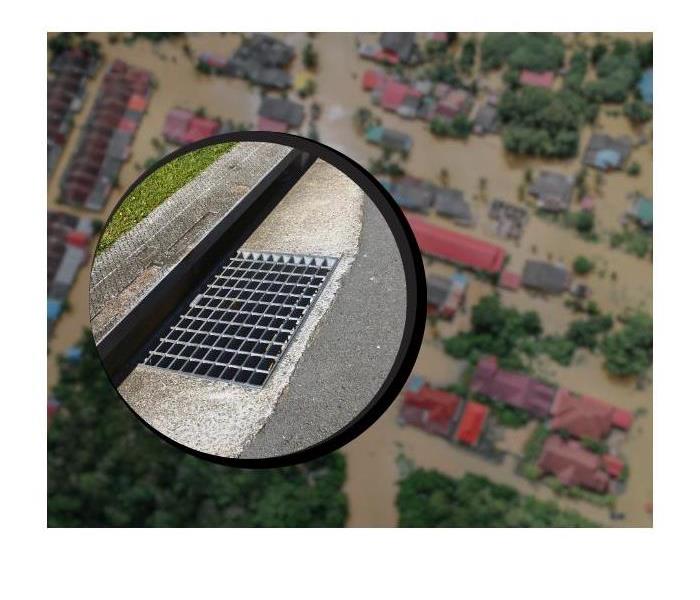5 Essential Tips to Mitigate Flooding Risks in Pueblo, Colorado
5/18/2024 (Permalink)
Pueblo, Colorado, nestled at the confluence of the Arkansas River and Fountain Creek, is a vibrant city known for its rich history, diverse culture, and stunning natural landscapes. However, like many cities situated near water bodies, Pueblo is not immune to the threat of flooding. With the increasing frequency and intensity of extreme weather events attributed to climate change, it's crucial for residents and authorities alike to take proactive measures to reduce flooding risks and safeguard lives and properties. In this blog post, we'll explore five essential tips to mitigate flooding risks in Pueblo, Colorado.
1. Stay Informed and Prepared:
Knowledge is power when it comes to dealing with flooding risks. Stay informed about weather forecasts, river levels, and flood alerts issued by local authorities. Sign up for emergency notifications and heed evacuation orders if necessary. Develop a comprehensive emergency plan for your family or business, including evacuation routes, emergency contacts, and essential supplies like food, water, medications, and important documents. Being prepared can make a significant difference in how well you can navigate through a flooding event and ensure the safety of your loved ones.
2. Invest in Flood Insurance:
Many homeowners mistakenly believe that their standard homeowner's insurance policy covers flood damage. However, most policies exclude flood damage, leaving homeowners vulnerable to substantial financial losses. To protect your investment and mitigate financial risks associated with flooding, consider purchasing flood insurance through the National Flood Insurance Program (NFIP) or private insurers. Flood insurance can provide coverage for building structures and contents, helping you recover more quickly and effectively in the aftermath of a flood. Consult with an insurance agent to determine the appropriate coverage for your property and budget.
3. Implement Stormwater Management Practices:
Effective stormwater management is critical for reducing flooding risks in urban areas like Pueblo. Stormwater runoff from heavy rainfall can overwhelm drainage systems, leading to flash floods and property damage. Implementing stormwater management practices, such as installing rain gardens, permeable pavements, and green roofs, can help absorb and infiltrate rainwater, reducing the volume of runoff and alleviating pressure on drainage infrastructure. Additionally, maintaining and cleaning gutters, downspouts, and storm drains regularly can prevent blockages and ensure proper water flow away from your property.
4. Promote Natural Floodplain Functions:
Recognizing the ecological value of floodplains and restoring their natural functions can play a significant role in reducing flooding risks in Pueblo. Floodplains act as natural buffers that absorb excess water during heavy rainfall and help mitigate downstream flooding. Protecting and restoring floodplain areas through land-use planning, conservation easements, and green infrastructure projects can enhance their capacity to store and slow down floodwaters, reducing the severity of flooding events and protecting downstream communities. Encourage local policymakers and developers to prioritize floodplain preservation and restoration efforts to enhance community resilience to flooding.
5. Participate in Community Flood Mitigation Efforts:
Flooding is a community-wide issue that requires collective action and collaboration to address effectively. Get involved in community flood mitigation efforts by joining local watershed groups, neighborhood associations, or volunteer organizations dedicated to flood risk reduction and resilience building. Participate in floodplain mapping and hazard mitigation planning processes to contribute valuable insights and expertise to community decision-making. By working together with fellow residents, businesses, and government agencies, you can advocate for sustainable flood management strategies, secure funding for flood mitigation projects, and strengthen community resilience to flooding over the long term.
In conclusion, reducing flooding risks in Pueblo, Colorado, requires a multifaceted approach that combines individual preparedness, infrastructure improvements, ecosystem restoration, and community engagement. By staying informed, investing in flood insurance, implementing stormwater management practices, promoting natural floodplain functions, and participating in community flood mitigation efforts, residents and authorities can work together to mitigate the impacts of flooding and create a safer, more resilient city for future generations. Let's take proactive steps today to build a more flood-resilient Pueblo tomorrow.





 24/7 Emergency Service
24/7 Emergency Service
